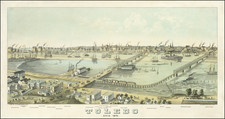Includes The Newly Constructed Superior Street Viaduct and Bridge
Rare large separately published map of Cleveland, Ohio, published by William Stringer and printed in New York City by Ferdinand Mayer & Sons.
The map shows Cleveland at a time when it was growing rapidly in size, having more than doubled its population each decade between 1840 and 1870. The map is colored by wards, with the existing city boundary in red and the proposed boundary in green.
The map incudes and inset view of the Superior Street Viaduct, complete with a rotating bridge to allow ships to pass. First proposed in 1854 when Ohio City became part of Cleveland, the project was approved and construction commenced in 1872, making this among the earliest surviving images of the completed project, which would remain in use until 1920.
the Water Works Tunnel project is also shown, as are railroad lines and important public buildings and private buildings. Euclid Avenue Park is shown as owned by JH Wade. The names of a number of larger land owners are shown on the periphery, as are the names of suburbs, including Newburgh, Glennville Village, Brooklyn Village and West Cleveland Village.
This is one of the earliest printed large format maps of Cleveland.
Cleveland History
Cleveland was established on July 22, 1796, by surveyors of the Connecticut Land Company when they laid out Connecticut's Western Reserve into townships and a capital city. They named the new settlement "Cleaveland" after their leader, General Moses Cleaveland. Cleaveland oversaw the New England-style design of the plan for what would become the modern downtown area, centered on Public Square, before returning home, never again to visit Ohio.
The village served as an important supply post for the U.S. during the Battle of Lake Erie in the War of 1812. The Village of Cleaveland was incorporated on December 23, 1814. In spite of the nearby swampy lowlands and harsh winters, the town's waterfront location proved to be an advantage, giving it access to Great Lakes trade. It grew rapidly after the 1832 completion of the Ohio and Erie Canal. The town's growth continued with added railroad links.
In 1831, the spelling of the town's name was altered by The Cleveland Advertiser newspaper. In 1836, Cleveland, then only on the eastern banks of the Cuyahoga River, was officially incorporated as a city. That same year, it nearly erupted into open warfare with neighboring Ohio City over a bridge connecting the two communities. Ohio City remained an independent municipality until its annexation by Cleveland in 1854.
After the Civil War, the city witnessed rapid growth. The city doubled in size from 43,000 to 93,000 between 1860 and 1870 and nearly doubled in size again by 1880. Its prime geographic location as a transportation hub between the East Coast and the Midwest played an important role in its development as a commercial center. In 1874, the First Woman's National Temperance Convention was held in Cleveland, and adopted the formation of the Woman's Christian Temperance Union. Cleveland served as a destination for iron ore shipped from Minnesota, along with coal transported by rail. In 1870, John D. Rockefeller founded Standard Oil in Cleveland.
Rarity
The map is very rare. OCLC locates 3 examples (University of Michigan, Cleveland Public Library and British Library).
We note one example at auction in 2013, likely this example.











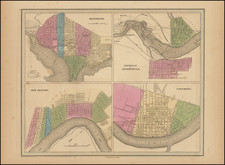
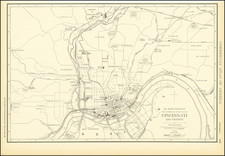
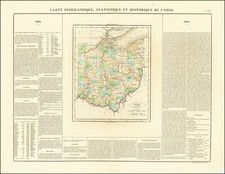
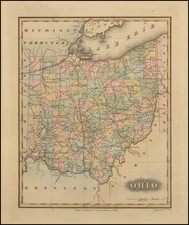
![Cincinnati. From Covington [Letter from Philipp Holzmann]](https://storage.googleapis.com/raremaps/img/small/84432.jpg)
